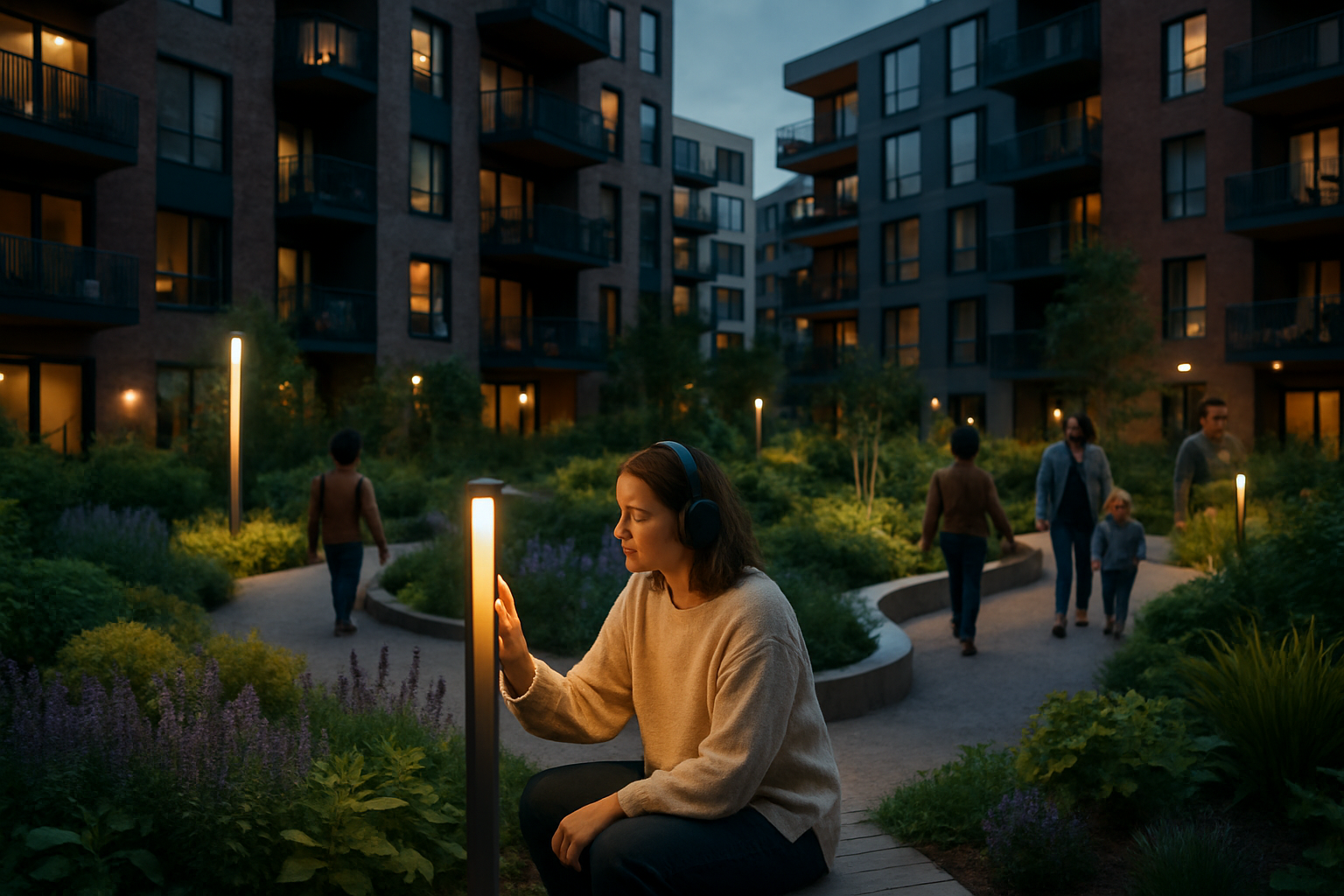Sensory-Inclusive Communities: Redefining Urban Spaces
The concept of sensory-inclusive communities is reshaping our understanding of urban design and social inclusivity. This emerging approach to city planning and community development prioritizes the diverse sensory needs of all individuals, particularly those with sensory processing disorders or neurodivergent conditions. By creating environments that cater to a wide range of sensory experiences, these communities are fostering a new era of accessibility and social integration.

Early pioneers in this field drew inspiration from occupational therapy practices, particularly those developed for individuals on the autism spectrum. These therapies emphasized the importance of controlled sensory environments in promoting comfort and reducing stress. As these principles gained traction, urban planners and architects began to incorporate sensory considerations into their designs, marking the birth of sensory-inclusive communities.
Principles of Sensory-Inclusive Urban Planning
At the heart of sensory-inclusive communities lies a set of core principles that guide their development. These principles prioritize flexibility, choice, and balance in sensory experiences. Urban spaces are designed to offer a range of sensory zones, from high-stimulation areas that cater to sensory seekers to low-stimulation retreats for those who are easily overwhelmed.
Key elements of sensory-inclusive design include:
-
Acoustic management to reduce noise pollution and create quiet zones
-
Lighting design that minimizes glare and offers adjustable brightness levels
-
Textured surfaces and tactile elements for sensory exploration
-
Olfactory considerations, including fragrance-free zones and natural scent gardens
-
Visual cues and wayfinding systems that accommodate various processing styles
These principles are applied across public spaces, residential areas, and commercial districts, creating a cohesive sensory landscape throughout the community.
Impact on Social Dynamics and Inclusion
Sensory-inclusive communities are fundamentally reshaping social dynamics by creating environments where individuals with diverse sensory needs can comfortably coexist and interact. This shift has profound implications for social inclusion, particularly for neurodivergent individuals who have historically been marginalized in traditional urban settings.
Research indicates that sensory-inclusive spaces promote increased social participation among individuals with sensory sensitivities. A study conducted by the Urban Design and Mental Health Institute found that sensory-inclusive public spaces saw a 40% increase in usage by individuals with autism spectrum disorders compared to traditional urban environments.
Moreover, these communities foster a culture of empathy and understanding. As neurotypical individuals become more aware of diverse sensory needs, social stigmas surrounding neurodiversity are gradually eroding, paving the way for more inclusive social norms.
Case Studies: Pioneering Sensory-Inclusive Communities
Several cities around the world have emerged as leaders in sensory-inclusive urban development. These case studies offer valuable insights into the practical implementation and outcomes of this approach:
-
Sensory City, Netherlands: This planned community near Amsterdam incorporates sensory-inclusive design principles throughout its infrastructure. Notable features include a network of sensory trails, adaptive lighting systems, and acoustically engineered public spaces.
-
Neurodivergent Neighborhood, Canada: Located in Vancouver, this residential development was designed in collaboration with neurodivergent individuals. It features customizable living spaces, communal sensory gardens, and a state-of-the-art sensory regulation center.
-
Inclusive Innovation District, Japan: This mixed-use development in Tokyo showcases how sensory-inclusive design can be integrated into high-density urban environments. It includes sensory-friendly workspaces, retail areas with adjustable sensory settings, and public transportation hubs designed to minimize sensory overload.
These pioneering projects demonstrate the feasibility and benefits of large-scale sensory-inclusive urban development, serving as models for future initiatives worldwide.
Challenges and Future Directions
While the concept of sensory-inclusive communities holds great promise, its implementation faces several challenges. One significant hurdle is the need for interdisciplinary collaboration between urban planners, architects, occupational therapists, and neurodiversity advocates. Bridging these diverse fields requires new educational programs and professional frameworks.
Additionally, the cost of retrofitting existing urban infrastructure to meet sensory-inclusive standards can be prohibitive for many municipalities. Innovative funding models and policy incentives are needed to accelerate adoption.
Looking ahead, the future of sensory-inclusive communities lies in the integration of smart city technologies. Adaptive environments that can respond in real-time to individuals sensory needs are on the horizon. Researchers are exploring the use of artificial intelligence and Internet of Things devices to create dynamically adjustable urban spaces that cater to a wide range of sensory profiles.
As our understanding of neurodiversity continues to evolve, so too will the principles of sensory-inclusive design. The ultimate goal is to create urban environments that are not just accessible, but truly welcoming and enriching for all individuals, regardless of their sensory processing styles. In doing so, these communities are not only reshaping our physical landscapes but also nurturing a more inclusive and empathetic society.





